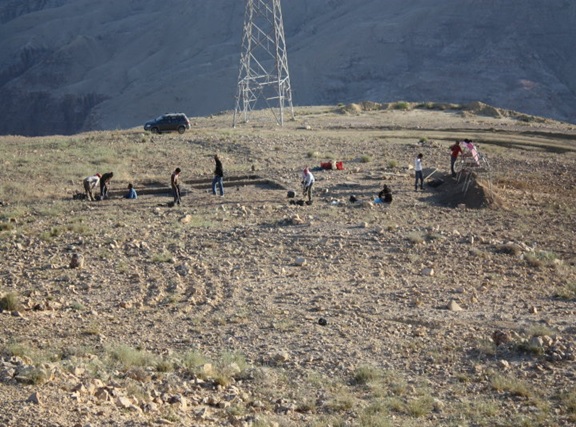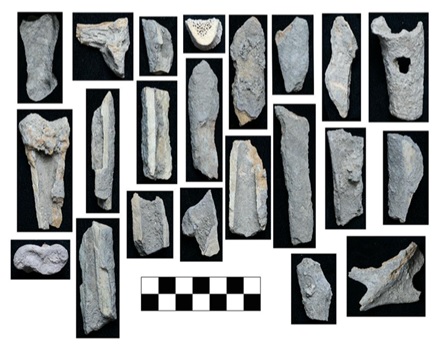|
Posted by Gabriela Perez-Dietz One of the most important jobs archaeologists do is put the past into perspective. One way they are able to get a better understanding of human history, is by spending time looking at material culture and bones from our past. The past still affects the present and the ways in which we understand those who came before us. About 10,000 years ago, during a period known as the Pre Pottery Neolithic B (PPNB) of the Southern Levant (present-day Jordan, Palestine/Israel), humans were transitioning from nomadic living to living in one place year-round. With this move came a slow transition from hunting to herding as the main way that people got animal resources. In my project I looked at goat bones from the PPNB site of al-Khayran in Jordan, in order to understand how the people who lived there acquired animal resources. Most zooarchaeologists who study animal bones from the PPNB have focused on herding, because it is the first time anywhere in the world that people reared animals within their communities. However, the development of herding was a slow process and we know that people were also hunting at this time. So which was being done at al-Khayran? I hypothesized that people at al-Khayran were hunting animals, rather than herding them. In order to predict what the archaeological record at al-Khayran would look like if people were hunting animals, I examined zooarchaeological research at other sites from this time period and utilized a body of ecological theories known as Optimal Foraging Theory. I then developed and tested the hypothesis that people at al-Khayran were attempting to meet their basic nutritional requirements, while minimizing the amount of time they were devoting to hunting. By taking a number of measurements on the bones from al-Khayran and comparing these measurements to the expectations derived from my hypothesis, I found this not to be true. While a small sample size created challenges for producing significant results for a number of tests, those that were found to be significant did disprove time minimization behavior in animal procurement practices. What this tells us is that the inhabitants of al-Khayran were not desperately pressed for resources. Instead, there were some other reasons why people were hunting at al-Khayran. As a number of authors, most notably John Speth, have argued that hunting is frequently less about meeting basic needs than it is about showing off social status, having fun, bonding with others, and/or acquiring meat because of its taste, rather than its nutritional value.
0 Comments
Your comment will be posted after it is approved.
Leave a Reply. |
Student ProjectsFind out what Skidmore's undergrads are currently working on. Use the Categories below to narrow down the types of posts you want to see. Archives
May 2015
Categories
All
|


 RSS Feed
RSS Feed
